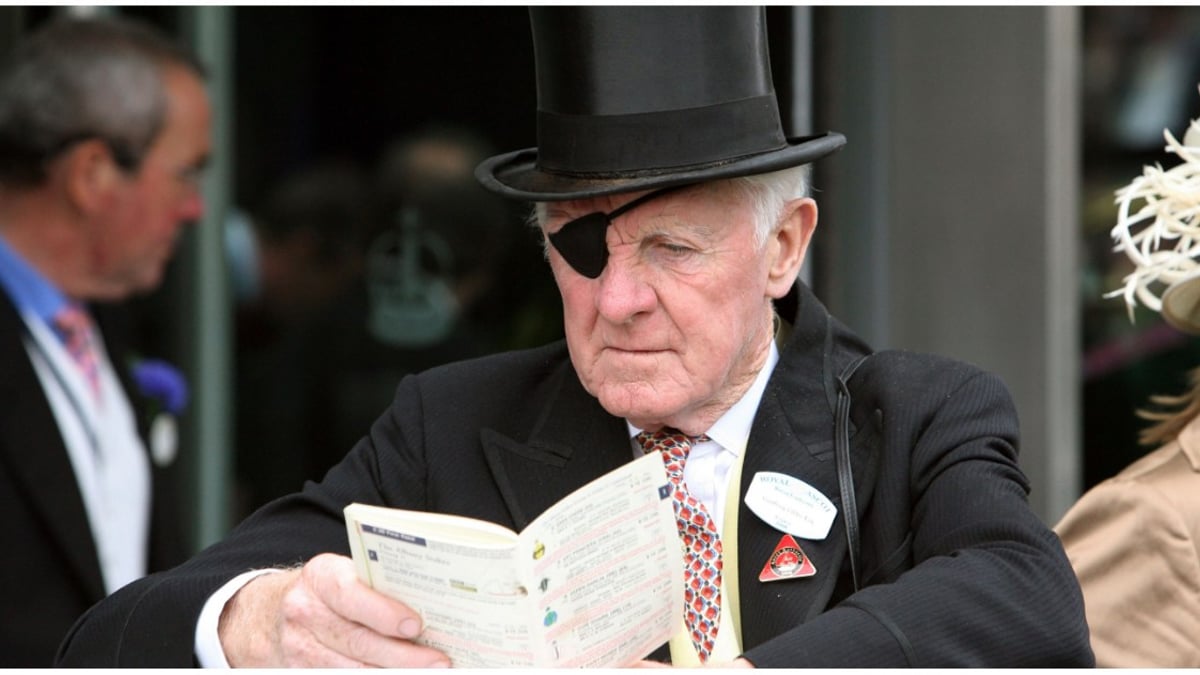How to Read a Racecard & Analyse Horse Racing Form

If you want long-term success betting on horses, you'll need to know how to read horse racing form.
The knowledge gained from studying the form can be crucial when looking for an edge on the bookmakers.
If you're not sure how to read a racecard, or you want to know how to study form in-depth, this is the guide for you.
Racecard Basics

Above we have an example of a racecard from a horse racing betting site. Let’s break down all the information shown here:
- Race Number: The horse’s race number can be used when placing a bet at the track. When it comes to handicap races, the lowest-numbered horses are the ones carrying the most weight.
- Draw Number: The number in brackets indicates where a horse is drawn in the stalls. This applies to flat racing only.
- Jockey Name: Indicated in this case by a (J).
- Trainer Name: Indicated in this case by a (T).
- Form: You will see a series of numbers showing where the horse has finished in recent races. The most recent outing is furthest right.
- Weight: For handicap races, this value represents weights assigned to horses according to their handicap rating.
- OR: Stands for Official Rating - a numerical value assigned by the British Horseracing Authority representing the horse’s ability.
- RPR: Stands for Racing Post Rating. This takes into account a number of factors including weight and recent performances.
- Top Speed: Indicates how fast a horse can run.
How to Read Horse Racing Form
Racing form should always be read from right to left, so the latest performance features on the far right.
'1' means a horse won the race, '2' represents second and so on. Bear in mind that a hyphen (-) will denote a break in seasons.
The number '0' means that the runner didn’t finish in the first nine.
The letter 'R' means the horse refused to run, 'U' means the rider was unseated and 'F' is when a horse was a faller. The letter 'P' means that the horse was pulled up during the race and didn’t finish.
Bear in mind that form can sometimes be misleading. A string of 1s might suggest that a horse is a good thing - but horses often achieve these in lower-grade races before stepping up in class.
Form Figures Glossary
| Term | Abbreviation/Example |
|---|---|
| Form | 32448-34 |
| Finished Outside First Nine | 0 |
| Change of Season | - |
| Season Before Last | / |
| Brought Down | B |
| Carried Out | C |
| Disqualified | D |
| Fell | F |
| Left at Start | L |
| Horse Ran Out | RO |
| Pulled Up | P |
| Refused to Race | R |
| Slipped | S |
| Unseated Rider | U |
| Void Race | V |
More Racecard Terms to Understand
When learning how to read horse racing form, you may notice more detailed information can be found through interactive racecards on websites like the Racing Post.
Once you have got to grips with the basic terms, dig a bit deeper to expand your knowledge before placing a bet.
Distances
The abbreviations below represent relatively close finishes between horses.
You'll also often find a number denoting the distance between horses, which is always shown in lengths.
Similarly, a number in brackets underneath might indicate the distance between a horse and the winner of the race.
| Term | Abbreviation |
|---|---|
| Nose | nse |
| Short Head | shd |
| Head | hd |
| Neck | nk |
Going
The going refers to the condition of the ground and is a hugely important piece of information to take into account.
The going is generally not confirmed until the day of the race when the course has been inspected.
Be aware that heavy rainfall during a meeting might result in the going changing.
| Going Terms | Abbreviation |
|---|---|
| Firm | f or fm |
| Good | g or gd |
| Hard | hd |
| Heavy | hvy |
| Soft | s |
| Standard | stand |
| Yielding | yld |
Race Type
You will generally find between six and eight races in a meeting and there could be a wide range of different race types included.
It’s good to have an understanding of each race type, especially whether you are betting on a handicap, where runners carry weight according to their rating.
Here are some of the most common abbreviations relating to race types:
| Race Type | Abbreviation |
|---|---|
| Grade 1, 2 or 3 (Jumps) | Gd |
| Group 1, 2 or 3 (Flat) | Gp |
| Handicap | Hcap |
| Hurdle | Hur |
| Chase | Ch |
| All-Weather Race | AW |
Headgear
Some horses are given headgear equipment to improve their performance.
The common abbreviations below will give you an understanding of what a horse might be wearing.
| Headgear | Abbreviation |
|---|---|
| Hood | h |
| Blinkers | b |
| Cheekpieces | p |
| Tongue-Tie | t |
| Visor | v |
| Eye Hood | e |
| Hood & Tongue-Tie | Ht |
| Eye Cover | e/c |
| Eye Shield | e/s |
How to Use Form to Pick Winners
Now you know how to read horse racing form, you can start using this information to your advantage.
Here are some of our tried and tested tips for using form to pick a winner:
Consider Course & Distance Form
Sometimes you will see the abbreviation 'CD' on a racecard - standing for course and distance.
It means the horse in question has not only won before at that exact course but also over the same distance.
It can often be a telling piece of information considering that not every horse in a race will be suited to the track, nor indeed the length of the trip.
We recommend going beyond the racecard and delving deeper into course and distance information.
Some racecourses are fairly flat, while others are more undulating. There’s also the fact that runners travel anti-clockwise around some racecourses, while there’s a clockwise circuit when it comes to other tracks.
It might not sound significant, but in National Hunt racing some runners are renowned for jumping left-handed or right-handed.
Distance is also of huge importance and trainers will try horses out over different distances in order to find out whether they are suited to the trip.
Understand The Going
Some punters would argue that the going is the most important piece of information to take into account.
This will be announced provisionally ahead of a race meeting and is confirmed by the clerk of the course on the actual morning.
A betting market can be strongly affected by a change of going. For example, some runners will want lots of cut in the ground and you'll see money for these horses if the conditions are soft or even heavy.
Alternatively some horses will be suited to the firmer going, so keep an eye on the weather forecast leading up to a meeting to establish how ground conditions might look.
Bear in mind that it's not unusual for horses to be withdrawn from a race at short notice if the trainer doesn’t feel as though they'll be suited to the conditions.
Compare Handicap Weights & Mares Allowance
Each horse in a handicap race is assigned a specific weight according to overall ratings.
So while you might initially fancy the highest-rated horse at the top of a racecard, the burden of carrying top weight could mean there are more attractive alternatives.
Sometimes a horse is considered to be favourably weighted for a race, especially if that weight was assigned before a recent showing.
On a similar note, mares are assigned a weight allowance when running against their male counterparts. This is a controversial topic and it’s often argued that female horses don’t need this advantage.
Mares allowance can prove be a telling factor when it comes to backing the right selection.
How To Read Horse Racing Form - Key Takeaways
The ability to interpret horse racing form is crucial for any racing punter, but it pays to dig below the surface and get into more specific detail.
Just because a horse hasn’t won on heavy ground, it doesn’t mean that they haven’t run well in defeat on that type of surface, indeed they might have run a personal best on heavy ground without winning.
Mastering how to read horse racing form is only the beginning because when it comes to assessing a horse’s chance, the deeper you dig, the more accurate your assessment will be.
Check Out Racing Event Offers:
Royal Ascot Betting Offers
Stay In The Loop With Free Bets, Insider Tips & More!
Live Betting. Sports Promos. Sent Weekly.











